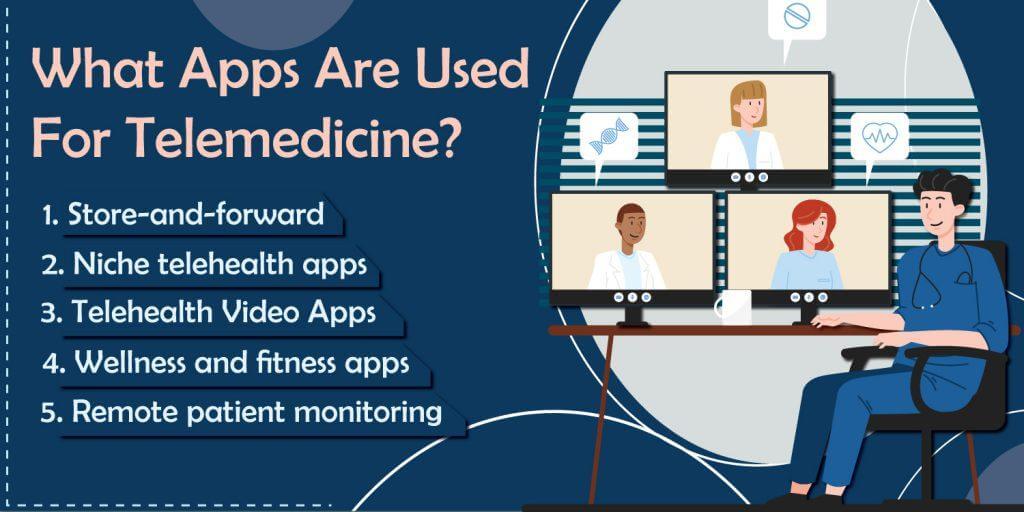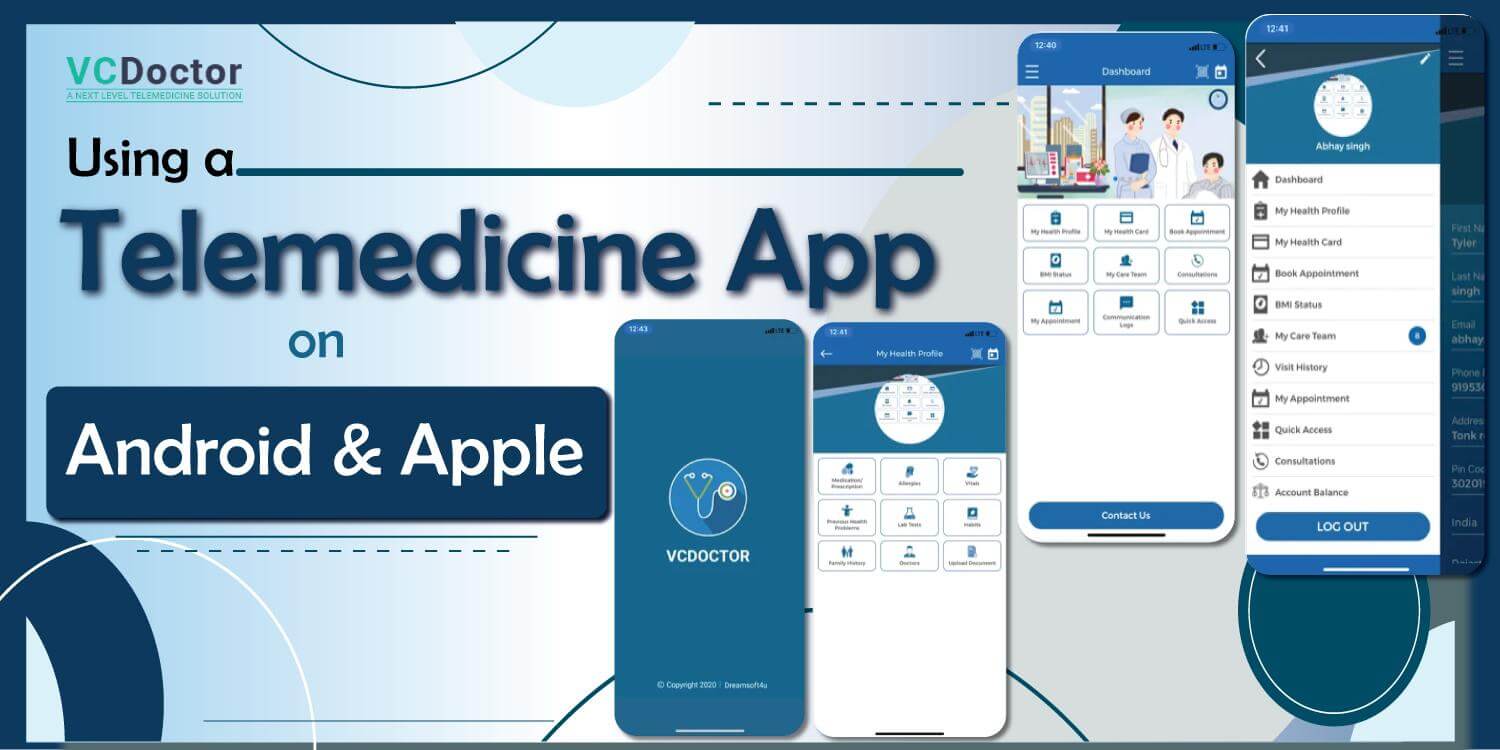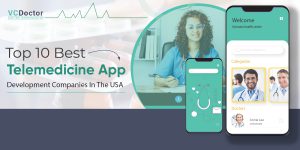Using a Telemedicine App on Android and Apple
Telemedicine apps are completely transforming the way healthcare is delivered worldwide. There is now a slew of telemedicine apps on popular app stores. Ever since the outbreak of the coronavirus pandemic consumers and providers explored safer ways to access and deliver care and telehealth adoption exploded.
At its most basic level, integrating fully virtual and near-virtual health solutions puts care closer to patients’ homes, making it easier for them to get help when they need it and improving their odds of effectively managing their treatment. These developments could help to enhance healthcare efficiency.
Here’s everything you need to know about telemedicine apps for Android and iPhone, including how to use them and which ones are available for Apple and Android.
Read More: How Does Telemedicine Reduce Healthcare Costs
How Do Telemedicine Apps Work?
Users download the telemedicine app and obtain access to it on their smartphone or tablet in the same way they would download any other app from Google Play or the Apple App Store. When it’s time for an appointment, instead of going to the doctor’s office, checking in at reception, and waiting in a waiting room, patients can sign in online using their smartphone, tablet, or computer.
How Does Telemedicine App Work for Patients?
Making use of telemedicine services is very easy. Patients schedule an appointment, provide basic medical information, and the clinician accepts, declines, or reschedules the appointment.
How Does Telemedicine App Work for Providers?
Doctors can treat their patients via video chat from afar using telemedicine. Integrating telemedicine apps for providers with technology like electronic medical records, artificial intelligence (AI), and automated streaming devices can aid physicians in providing better diagnostic and treatment assistance.
What Apps are Used for Telemedicine?
Telemedicine is becoming increasingly vital in order to keep patients and practitioners safe. It’s not difficult to find a telemedicine app for iPhone or Android these days, but finding one that works with a range of bandwidths and devices might be challenging. Telehealth apps come in a variety of forms, including:

1. Telehealth Video Apps:
During covid-19, online doctor consultations grew at an exponential rate. Remote consultations are possible with telehealth video apps. Furthermore, medical institutes might use them to deliver live lectures and conferences.
Read More: What Are The Benefits Of Telemedicine In Mental Health Care?
2. Remote Patient Monitoring (RPM Apps):
IoT has been a game-changer for the healthcare industry. Wearable technology enables real-time remote patient monitoring of patient biometrics such as blood pressure, heart rate, and more. The data from these devices is easily sent to RPM apps.
In addition to improved support and education for patients, RPM apps provide doctors greater freedom and time. Doctors can examine their patients’ vital signs using the app on their smartphones. RPM apps enable them to provide higher-quality care to a greater number of patients.
3. Wellness and Fitness Apps:
How many steps did you take today? Are you on track to meet your 30-minute fitness goal? Is there enough water in your system? How many calories did you consume altogether?
Just a few years ago, knowing the answers to all of these questions was challenging. That, however, is no longer the case. All you have to do is pick up your phone and download a wellness or fitness app.
A comprehensive mobile fitness app includes everything a fitness enthusiast needs to keep in shape. It schedules workouts, selects a meal plan, acts as a fitness coach and running assistant, and even delivers at-home training videos.
4. Niche Telehealth Apps:
Innovation is the lifeline of modern healthcare. In a market segment that’s becoming crowded and noisy, finding a niche can be crucial. Niche teleconsultation apps serve a wide range of health domains such as Digestive health, Heart health, IVF, and more.
5. Store-and-Forward
The interaction of two healthcare practitioners who are not in the same location is the focus of the Store-and-Forward telemedicine app. It collects clinical data and sends it electronically to another location for examination.
Patients, doctors, and specialists can use the app at any time and from any location. Clinicians can communicate with one another and with the patient whenever it is most convenient for them, resulting in increased efficiency and convenience. Private networks offer patient confidentiality and data protection. This sort of telemedicine is used in dermatology, radiography, and pathology. It has a higher level of security than the email system.
How Does A Telemedicine Appointment Work?
Patients must first create an account and give the essential information in order to connect with telemedicine apps. The user sits in front of a camera, which will allow the app user and the service provider to see one other.
- During virtual visits, patients will be required to sign in (New patients will be asked to create a profile first). Appointments can be made ahead of time on the same day.
- The session will commence after a patient and a physician has been paired. Patients will be contacted by their doctor. The conversation would ideally be done via video chat.
- A typical consultation lasts 15 minutes. At the conclusion of the session, the doctor will deliver a diagnosis and a personalized treatment plan, as well as explain any drugs that may require a prescription.
- Following the appointment, the doctor will make a suggestion based on their findings. During a virtual appointment, certain doctors may be able to write prescriptions. If the patient requires ongoing treatment, they can arrange for a virtual follow-up session or an in-person visit.
Hard-to-ignore Benefits of Telemedicine App
Convenience
Traveling to and from the doctor’s office takes up a significant portion of a patient’s day. Leaving the house for regular check-ups doesn’t seem worth it in some situations, such as when it’s raining or snowing excessively.
Telemedicine’s benefits begin with its ease of use. The telemedicine app allows patients to be diagnosed from the comfort of their own homes, and in some places, prescriptions can be dispatched to a nearby pharmacy immediately away. This technique not only saves time but also ensures that individuals in rural areas receive medical care when they need it.
Money-Saving
Both physicians and patients save money when they use telemedicine. Patients aren’t aware of the cost of missing work associated with routine appointments, and doctors aren’t harmed by no-shows or cancellations. Patients may find that a cash-only telemedicine service is less expensive than an urgent care center in some cases. Telemedicine reimbursement benefits physicians by allowing them to see patients who would otherwise be unable to see them during off-hours consultations.
Read More: Why Telemedicine Is The Future Of Healthcare Industry: Top Reasons
Time-Saving
Patients with chronic illnesses are often expected to spend a significant amount of time in the doctor’s office, though this is not always the case. For many conditions, renewing a prescription is routine, and it isn’t worth the long travel. If your patient has a common cold or a little infection, the physical exam can be performed remotely. In these situations, consumers can use telemedicine to find prompt treatment, and doctors don’t lose patients to quick-care retail clinics.
The Bottomline
Telemedicine apps are increasingly becoming a popular way for patients to be treated for a range of critical care needs and follow-up concerns due to its convenience and 24/7 accessibility. It’s faster and easier to prepare than an in-person session, saving patients time away from work or childcare.
A telemedicine app is a fantastic tool, but it isn’t appropriate for every procedure or condition. Before employing it, make sure the patient’s needs are met and that the technology is being used at the proper time.
You might be asking if telemedicine is worth it if you haven’t used it in your practice yet. The answer is an emphatic “yes”.If you’re still not convinced, then we are more than happy to answer all your queries. Feel free to reach out to us for more details.




